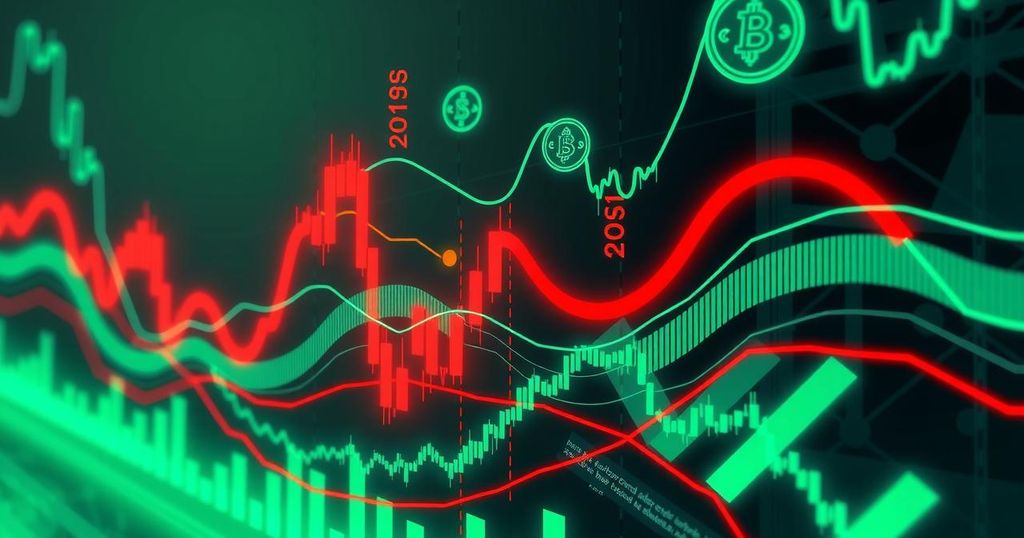Market Reset or Bull Run Breakdown? Insights from Crypto Industry Leaders
The recent downturn in the cryptocurrency market has sparked discussions among industry leaders. They believe it may be a normal correction rather than the start of a bear market. Experts like Eowyn Chen see this as a chance to refine product fundamentals, while others like Markus Levin emphasize the importance of adapting to policy changes. Despite the volatility, there remains optimism about the long-term prospects of crypto, with areas like real-world assets and improved wallets gaining interest.
Market Reset or Bull Run Breakdown? Crypto Industry Leaders Weigh In on Recent Correction
The crypto market’s recent shift has left many investors fretting. After a period steeped in optimism, driven by institutional buys and the buzz around Bitcoin ETFs, the market sparked dreams of a bull run. However, a sudden downturn—where Bitcoin fell below crucial support levels—raised questions: is this a mere correction or foreshadowing something worse?
To gain clearer perspectives, we gathered insights from various industry players – their viewpoints rang from wallets to exchanges and beyond. Each brought unique insights into the implications of this downturn and possible future directions.
Cooling Down or Worsening?
Following months of upward trends in the cryptocurrency sphere, the current drop has reignited debates. Is it just a healthy reprieve, or does it signal greater trouble? Eowyn Chen, CEO of Trust Wallet, expressed optimism amid the churn, suggesting that “corrections are part of any healthy market cycle.” She indicates that external economic pressures rather than market failures are provoking this shift. “There’s still plenty of capital on the sidelines—waiting, not fleeing,” she noted.
This cautious outlook was mirrored by Markus Levin of XYO, who underscored the impact of U.S. policy uncertainty. “Continuing unpredictability raises the chances of sustained bearish pressure,” he added, while still acknowledging the market’s stability showing through various economic indicators.
Sticking to Plans or Adjusting Tactics?
Market corrections can serve as a wake-up call, revealing core weaknesses and compelling teams to refocus. Surprisingly, despite the latest downturn, many leaders are not retreating; instead, they’re staying the course. Eowyn Chen reiterated her commitment to bolstering product fundamentals, maintaining, “We’re doubling down on being useful, intuitive, and secure.” She perceives this moment as a chance to refine operations without needing to trim excesses.
Markus Levin, too, advocates for flexibility. He noted that the unpredictable nature of U.S. policies requires traders to adapt swiftly to market conditions. “Markets can turn around on news from the White House,” he said, thus necessitating a strategy safeguarding against both upward and downward market movements.
At Phemex, CEO Federico Variola mentioned the downturn brings opportunity to counteract short-term speculative thinking. The exchange is working on enhancing products for user safety, aiming to prioritise quality listings rather than chasing current trends. “Many exchanges have been predatory… we’re committed to putting users and builders first,” he emphasised.
While the headlines might scream volatility, numerous industry figures are maintaining their focus on trust and long-term value amid the chaos.
Beyond the Numbers: What’s Important in Crypto?
In this volatile market, identifying key metrics becomes highly significant. Active traders like Mike Williams at Toobit focus on market psychology as a leading factor. “Overall sentiment is an important gauge,” he remarked, emphasising a reliance on technical analyses to pinpoint key setups.
In contrast, Markus Levin still sees broader, policy-based impacts as crucial. “The sentiment can quickly swing on news, especially from the administration,” he stated, indicating the need for hedging strategies that take both bullish and bearish potentialities into account.
Federico Variola urges a closer look at a less-discussed indicator: stablecoin supply, which he believes reveals crucial trends about market health.
Kevin Lee of Gate.io offers a more philosophical reflection, considering Bitcoin’s structural properties as the real indicators of value beyond fleeting speculation.
Across the industry, while the specific lenses may differ, a consensus seems to emerge: there’s no catch-all metric in today’s unpredictable crypto landscape; it all hinges on one’s perspective and position in the ecosystem.
Is It a Market Correction or a Needed Cleansing?
Corrections in crypto might be harsh, but maybe they’re essential. As prices pull back from their highs, industry leaders find themselves at a crossroads between panic and perspective. Many, like Eowyn Chen, view the current shift as a pivotal moment for recalibration. “Corrections consolidate and clarify,” she stated.
Markus Levin likens corrections to a form of market detox. “This phase shakes out some weaker players,” he noted, promoting healthier investment behaviours in the long run. On the flip side, Federico Variola hinted that not every correction is benign; prolonged uncertainties can potentially expose wider systemic vulnerabilities.
Mike Williams sees the ongoing volatility as simply part of market dynamics, asserting that regular fluctuations are normal and historical for a maturing crypto ecosystem. With Bitcoin surviving countless trends, he remains confident about its enduring appeal.
Ultimately, whether it’s a shakeout or a stress test, this correction is fulfilling its role by emphasising resilience and the importance of preparing for the next frontiers of innovation.
Enduring Excitement Amidst Uncertainty
Even as the market roils, innovation persists unabated. For leaders like Eowyn Chen, there’s a palpable interest in areas where crypto meets tangible utility. Enhanced stablecoin infrastructures, she believes, could improve finance globally, especially in underserved markets. Chen is also excited about using AI and improved designs to transform wallets into intelligent financial tools.
Markus Levin stresses that projects generating real revenue are more likely to survive market caprices. He points to DeFi, RWAs, and DePIN as being significant and sustainable sectors. Similarly, Mike Williams sees RWAs as bridging crypto with everyday life even if not immediately prominent.
Kevin Lee, meanwhile, adopts a broader stance, acknowledging the volatility and challenges but prioritising the establishment of a secure and compliant atmosphere for engagement.
In sum, excitement about crypto’s future remains; it’s simply shifting focus from sensationalism towards foundational, enduring value lessons.
Disclaimer: This article is for informational purposes only and does not constitute financial advice.




Post Comment